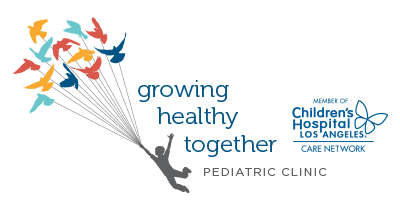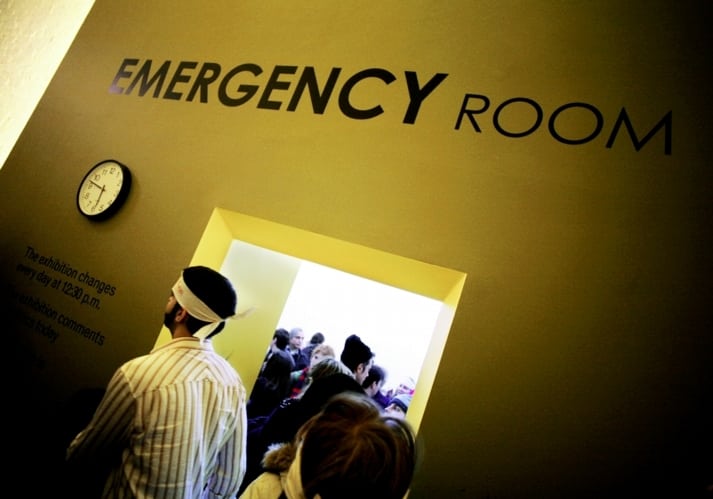The emergency room, or ER, is a busy and stressful environment for most who enter. In times of greatest need, emergency room docs and nurses are there to help out in every way they can. However, ERs everywhere are packed with patients and long wait times, especially for less severe cases.
Emergency Room Wait Times
Emergency room wait times have been averaged at around four hours, in some hospitals. Parents typically take their kids to the ER for respiratory illness and fever, injuries, and vomiting/diarrhea, but some symptoms don’t necessarily require emergent action. You may not need to go to the ER for ear infections, high fevers, and all night vomiting/diarrhea. In these cases, you should call your pediatrician for advice and save yourself the stress, frustration, money, and time. If you do actually need to head to the ER, ProPublica has updated estimated emergency room wait times so you can know ahead of time, or head to a hospital that is less busy than others.
If you are already at or on the way to the ER, don’t call your pediatric healthcare provider. Go in and update your child’s provider after your ER visit and during operating hours.
It’s important for you, as a parent, to trust your instincts. No one knows your kid quite as you do, so trust your ability to discern true illness in your kid. However, the middle of the night episodes can lead to decisions based on exhaustion and thought-escalation, rather than actual need.
Newborns
Infants up to 12 weeks of age still have an immature immune system and are more fragile than older kids. Almost anything out of the ordinary for newborns can be cause for concern and possible emergency. Don’t medicate them for fever until a practitioner has seen them. Medications like acetaminophen and ibuprofen can sometimes mask the severity of fever or symptoms.
Fever
As a general rule,
- newborns (under 1 month) should be taken to the ER for a temp over 100.7° F
- older kids should be taken for a temp over 103.5° F (check first to see if they are responsive to fever reducers like Tylenol or Motrin)
Fevers are a good thing. If your kid has a fever, it means their immune system is working and fighting off an infection. We recommend giving Acetaminophen (Tylenol) or Ibuprofen (Advil, Motrin) to kids with fevers or headaches. Headaches with or without fever are not considered life-threatening. Call your pediatric healthcare provider if your kid isn’t eating, drinking, or playing, or is confused or having difficulty walking. Take your child to the ER if they develop a seizure related to fever.
Breathing
Tight airways can be potentially life-threatening. With many respiratory infections or illness, your kid might have a little bit of trouble breathing normally. If they are wheezing and noisily breathing with chest sucking and belly moving, you should go to the ER. One way of checking this is if they are taking in too many breaths. Note that kids’ breathing typically decreases with age.
- Baby: 60-70+ breaths per minute
- 1 year: 40+ breaths per minute
- 2 years and older: 30+ breaths per minute
If an airway is blocked by an object or food, it’s important that you don’t reach into your child’s throat and get the object. This can cause you to get your finger bit and worse, push the object further into the child’s throat. Administer CPR and have someone call 911.
Vomiting/Diarrhea
Vomiting and diarrhea are sometimes life-threatening because it’s so easy for your kid to become dehydrated. In some cases, kids need to be taken to the ER to get IV fluids for dehydration.
Symptoms of severe dehydration:
- Decreased urination
- Sunken soft spot on infant’s head
- Sticky lips and mouth
- Tearless crying
- Sunken eyes with dark circles
If your kid has persistent vomiting or diarrhea, or blood in vomit or stool, consult your pediatrician.
Seizure
If your kid is having a seizure for the first time, you should take them to the ER. Until you can rule out a severe problem, it’s best to err on the side of caution. Your kid may require tests to rule out severe brain issues or seizure disorders.
Signs your kid is having a seizure:
- Limp body
- Convulsions
- Stiffening and jerking of the body
- Eyes rolling back
- Eyes staring or blinking
- Repeating movements like chewing or clapping
- Confusion after event
- No memory of the event
Injury
You should go to the ER if your child…
- Has a significant fall.
- Is bleeding profusely and the bleeding won’t stop with direct pressure for 15 minutes.
- Has been hit by a car.
Bumps and Rashes
Most bumps and rashes are no cause for concern. If your child has a big bump on their head, usually he or she is fine. Your kid is allowed to nap in the case of a head bump. Rouse them every couple of hours to be sure that they’re okay. Take them to the ER if they are vomiting or confused after a big fall.
Another potential emergency could be if they have a red/purple rash that doesn’t disappear under pressure. Apply pressure with your fingertip. If the red/purple rash doesn’t disappear for a moment after you let go, this could be an urgent rash.
When To Call 911:
-
If your kid is unconscious,
-
Blue, or
-
Badly injured.
If you are doubtful about whether or not to take your kid to the emergency room, call your pediatrician first. Even if it’s in the middle of the night, many pediatricians will allow emergency calls from patients. When you call your pediatrician, it’s important to have all of the information necessary to determine if your situation is an emergency. Also, your pediatrician is likely to ask the following questions, so have the answers ready.
Pediatrician Questions
-
How old is your child?
-
What are his symptoms and when did they start?
-
How often are they vomiting/diarrhea?
-
What’s their temperature and how did you take it?
-
When did they last have medication and how much did you give them?
-
Have there been any changes in sleeping, feeding or waste excretion?
Finally, if you have to go to the ER, we at GHT recommend going to an ER that specializes in pediatric care. LA County has an Emergency Departments Approved for Pediatrics (EDAP) program that identifies which ER’s are better to go to for children. The hospital closest to our office is Long Beach Memorial at 2801 Atlantic Ave. For our Orange County patients, we recommend CHOC (Children’s Hospital of Orange County) off of the 24.
As always, we welcome your feedback and questions! In conclusion, comment here on our blog to keep the conversation going, or contact Growing Healthy Together.




